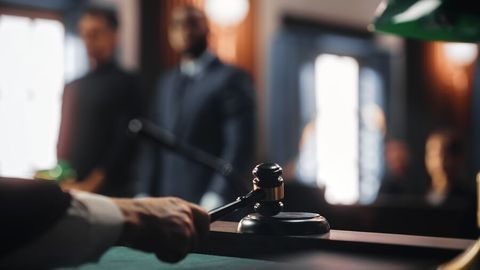Written Description Is Important In Construing Claim Terms
Client Alert | 1 min read | 06.23.06
In Honeywell International, Inc. v. ITT Industries, Inc. (No. 05-1407; June 22, 2006), the Federal Circuit affirms a district court's grant of summary judgment of non-infringement of U.S. Patent No. 5,164,879 whose claim 1 is directed to a fuel injection system component communicating fuel to the engine of a motor vehicle.
The Federal Circuit agrees with the district court's construction of the term “fuel injection system component” as being limited to a fuel filter. The written description of the application refers to the fuel filter as “this invention” or “the present invention” several times. Further, the written description is not seen as indicating that a fuel filter is merely a preferred embodiment of the claimed invention. A broader statement made by the patentee during prosecution of the application that the claims cover “ all fuel components manufactured of the moldable material disclosed and claimed in the specification” is considered to be ambiguous and possibly inconsistent with the written description, and thus entitled to little weight. Also, little weight is assigned to the patent examiner's restriction requirement during prosecution, with respect to claims for a “fuel filter” and a “fuel system component,” because the examiner did not construe the meaning of these terms.
The accused products are “quick connects,” which are nut-like structures that join various components of a fuel injection system together, such as a fuel line to a fuel filter. Because the quick connects do not filter fuel, they are found not equivalent to the fuel filter of claim 1.
Insights
Client Alert | 6 min read | 11.26.25
From ‘Second’ to ‘First:’ Federal Circuit Tackles Obvious Claim Errors
Patent claims must be clear and definite, as they set the boundaries of the patentee’s rights. Occasionally, however, claim language contains errors, such as typographical mistakes or incorrect numbering. Courts possess very limited authority to correct such errors. The United States Court of Appeals for the Federal Circuit has emphasized that judicial correction is appropriate only in rare circumstances, where (1) the error is evident from the face of the patent, and (2) the proposed correction is the sole reasonable interpretation in view of the claim language, specification, and prosecution history. See Group One, Ltd. v. Hallmark Cards, Inc., 407 F.3d 1297, 1303 (Fed. Cir. 2005) and Novo Indus., L.P. v. Micro Molds Corp., 350 F.3d 1348, 1357 (Fed. Cir. 2003).
Client Alert | 5 min read | 11.26.25
Client Alert | 6 min read | 11.25.25
Brussels Court Clarifies the EU’s SPC Manufacturing Waiver Regulation Rules
Client Alert | 3 min read | 11.24.25


